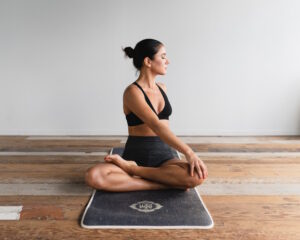
Understanding the core principles of Pilates is key to unlocking the full potential of this transformative exercise method. Developed by Joseph Pilates, these principles serve as the guiding philosophy behind the practice, emphasizing core strength, proper alignment, and mind-body connection. In this article, we delve into the core principles of Pilates, their significance, and explore the foundational principle that forms the basis of this holistic approach to fitness.
What are the core principles of Pilates?
The core principles of Pilates form the bedrock of this exercise method, providing a framework for its practice. They include:
1. Breath: Focusing on deep, mindful breathing patterns to facilitate relaxation, enhance oxygenation, and promote mind-body connection.
2. Concentration: Cultivating mental focus and awareness to perform movements with precision, control, and intention.
3. Control: Performing exercises with deliberate control, emphasizing quality of movement over quantity and harnessing muscular engagement throughout.
4. Centering: Prioritizing the activation and stability of the core muscles, particularly the deep abdominal muscles, to provide a strong foundation for movement.
5. Precision: Emphasizing precise and efficient execution of movements, targeting specific muscle groups and promoting proper alignment.
6. Flow: Encouraging smooth, continuous movements that flow seamlessly from one exercise to another, maintaining fluidity and rhythm.
Why are the principles of Pilates important?
The principles of Pilates are integral to the effectiveness and transformative nature of the practice. They provide a set of guidelines that ensure proper technique, alignment, and engagement of the body and mind. By incorporating these principles into each movement, practitioners develop a heightened sense of body awareness, concentration, and control. The principles help individuals to tap into their deep stabilizing muscles, including the core, resulting in improved posture, strength, and flexibility. Furthermore, by emphasizing precision and flow, the principles promote efficiency of movement and reduce the risk of injury. Integrating these principles into the practice of Pilates not only enhances physical fitness but also fosters mental focus, relaxation, and a deeper mind-body connection.
What is the first principle of Pilates?
The first principle of Pilates is breath. Breath is considered the foundation of the practice, and proper breathing techniques are integral to each movement. Pilates emphasizes a specific breathing pattern known as “lateral thoracic breathing” or “costal breathing,” where the breath expands the ribcage laterally and fills the sides and back of the torso. This type of breathing allows for better engagement of the deep abdominal muscles and promotes a sense of relaxation and focus. The breath acts as a catalyst for movement, aiding in the flow of energy and oxygenation of the body. By consciously integrating breath with each exercise, practitioners enhance their body awareness, engage the core more effectively, and synchronize movement with breath, resulting in a more mindful and harmonious practice.
Understanding the core principles of Pilates provides a solid foundation for a successful and transformative practice. These principles, including breath, concentration, control, centering, precision, and flow, guide practitioners to engage their bodies and minds fully. By incorporating these principles into their practice, individuals develop increased body awareness, improved posture, strength, and flexibility. The principles also promote mental focus, relaxation, and a deeper mind-body connection. As the first principle of Pilates, breath plays a vital role, serving as the foundation upon which all other principles are built. By integrating proper breathing techniques into each movement, practitioners enhance their core engagement and synchronize their body and breath, resulting in a more mindful and effective practice of Pilates.